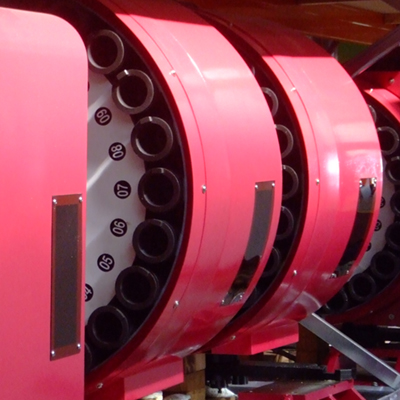When it comes to the use of Artificial Intelligence (AI) in the construction industry, our minds might take us to a futuristic vision of remote-controlled robots doing the work for us. And while this may be a possibility in the not-so-distant future, as research and applications of autonomous technology progress at speed, what are the real world, here and now applications for AI in construction? Can the industry really benefit from something that might be seen as taking jobs away from humans?
Researchers from Cranfield University have worked to develop existing AI technology and configure it for the construction industry – offering an AI solution that can improve safety, enhance productivity and create opportunities for human workers to focus their attention on “value-adding” tasks.
How can the construction industry benefit from AI?
In the Construction 2025 industrial strategy, the UK government identified construction as a significant growth sector. But profit margins are tight – dipping below 1.5% for the top 25 companies in 2015. External conditions, such as the weather, can impact schedules dramatically, and the need to carry out essential but time- and therefore cost-consuming non-value-adding activities to ensure regulatory and safety compliance, encroaches into profit margins and productivity.
According to figures from McKinsey (2017), quoted in an article published by Constructible, the global construction industry “has grown by only 1 percent per year over the past few decades.” Furthermore, productivity per worker has remained flat compared to other industries – which many argue is because “construction is one of the most under-digitized industries in the world and is slow to adopt new technologies.”[1]
Tight profit margins impact companies’ willingness to invest in innovation, and changeable conditions make the application of smart technologies on sites challenging due to the huge amounts of data that would need to be gathered.
The challenges are clear – but so are the benefits. The implementation of AI could help the industry to become more efficient and productive, while also upholding (and even enhancing) safety standards – for instance through smart safety equipment monitoring which can provide an overview of what is happening and where intervention may be required on a large site, in real-time.
The key to success when it comes to AI in the construction industry is developing technology and systems which can gather data in a way that is unobtrusive, safe, reliable, and does not create additional non-value tasks for an already stretched workforce – instead freeing up workers’ time to focus on tasks that will be far more productive. This is a challenge that researchers from Cranfield worked on with construction giant Bam Nuttall and software specialist Iotic Labs to create an artificial intelligence-enabled safety board monitoring system for the UK construction industry.
Lightening the load: how The Learning Camera can improve productivity and reduce the burden of health and safety-related tasks for workers.
Commencing in 2019, The Learning Camera project uses a combination of technology concepts including the Internet of Things, machine learning, and cloud technologies to develop a self-learning technology capable of monitoring and analysing various scenarios on construction sites – providing real-time feedback and near-instant alerts when intervention is required.
The technology enables the user to train a standard webcam, linked to an online dashboard via a computer, to recognise a scenario on-site and automatically issue an alert or action when that scenario deviates from the norm so that the situation can be attended to. Multiple cameras can be set up across sites, linking back to one dashboard.
It means that, for instance, were a key piece of safety equipment on-site to be used or missing – the technology could provide an almost instantaneous report of what was missing and where from. Not only does this remove the need for a human worker to spend time manually checking equipment – and free up their time for more value-adding tasks – it also makes the safety monitoring process more efficient. Where a human may only have the capacity to go and check equipment once or twice a day, the technology can be constantly checking. This means that skilled workers don’t have to spend time carrying out tasks that are time-heavy but require little skill, but essential information about safety equipment is still being gathered – and at a greater frequency.
The Learning Camera offers up a flexible – and scalable – solution that is easily applicable and holds the potential to improve construction site safety while also enhancing productivity and creating a more rewarding working environment for skilled workers, by reducing their time spent on more menial monitoring tasks. Furthermore, by adapting existing technology and making use of standard webcams, the technology offers a cost-effective solution to enable the adoption of AI in an industry grappling with tight profit margins.
Learn more in the video below:
Developing AI technology to reduce productivity disputes
AI can also be used in the construction industry to provide an overview not just of one particular scenario, but of all activity happening across large and complex construction sites. Using recognition technology, it’s possible to monitor what machinery is in use, where personnel are working and what personal protective equipment is being used.
Dr Yifan Zhao, Senior Lecturer in Data Science at the Centre for Lifecycle Engineering and Management at Cranfield University, who was the lead researcher on The Learning Camera project, is now working on a project – One Source of Truth - led by Bam Nuttall, in partnership with Cranfield University, Werner Homes, Glideology Limited and Building Research Establishment Limited.
The One Source of Truth project applies a framework of digital technologies including Internet of Things, Computer Vision and AI to digitalise activities being carried out on-site, training the technology to recognise every machine (down to the exact model), people, their behaviour and even what personal protective equipment is being used. The technology can be used to monitor asset availability and usage, man-hours and the type of work staff are completing, and the progress of work. This could enable construction site managers to easily monitor the productivity of complex construction sites, identify potential health and safety issues and could also be used as digital evidence of how much work has been completed.
Contract administration is one of the leading causes of construction disputes in the UK[2]. The application of AI monitoring can help to establish the true causes of productivity delays and offer evidence for warranty providers (such as insurance and mortgage providers) that homes have been built consistently with the appropriate quality checks in place.
But will AI take jobs away from people?
A key concern when it comes to the increased adoption of automation and AI technology is that we will be replacing humans with robots and taking jobs away from people. But Dr Zhao stresses that it’s not about replacing humans, but using technology to support them and create better working conditions by enabling them to work safely and more efficiently on the tasks that matter. There’s also the opportunity for the adoption of new technologies to actually create more jobs and attract different types of talent into the construction industry. Speaking about The Learning Camera project in 2019, Dr Zhao highlighted that applying artificial intelligence technologies to a traditional industry “helps to promote the need for the construction industry to attract talent with skills in software and hardware development.”
Sumano Rao, Global Product Marketing Leader, Buildings Content, states: “Despite the predictions of massive job losses, AI is unlikely to replace the human workforce. Instead, it will alter business models in the construction industry, reduce expensive errors, reduce worksite injuries, and make building operations more efficient.”
While the adoption of innovative AI technology has been slow in the construction industry compared to other industries such as high-value manufacturing and healthcare, implemented well - AI offers the opportunity to drive cost and time savings, helping to improve efficiency and productivity in construction.
The Learning Camera technology is the subject of a patent application by Cranfield University, Bam Nuttall and Iotic Labs, and is the subject of commercialisation. Enquiries regarding this can be directed to the Cranfield Technology Transfer Manager, Robert Evans.
Read more about The Learning Camera and One Source of Truth projects.
[1] The benefits of AI in construction, Sumano Rao. January 2019
[2] One Source of Truth: Using AI & computer vision to reduce contract disputes, manage warranties in MMC building and measure productivity & safety.



